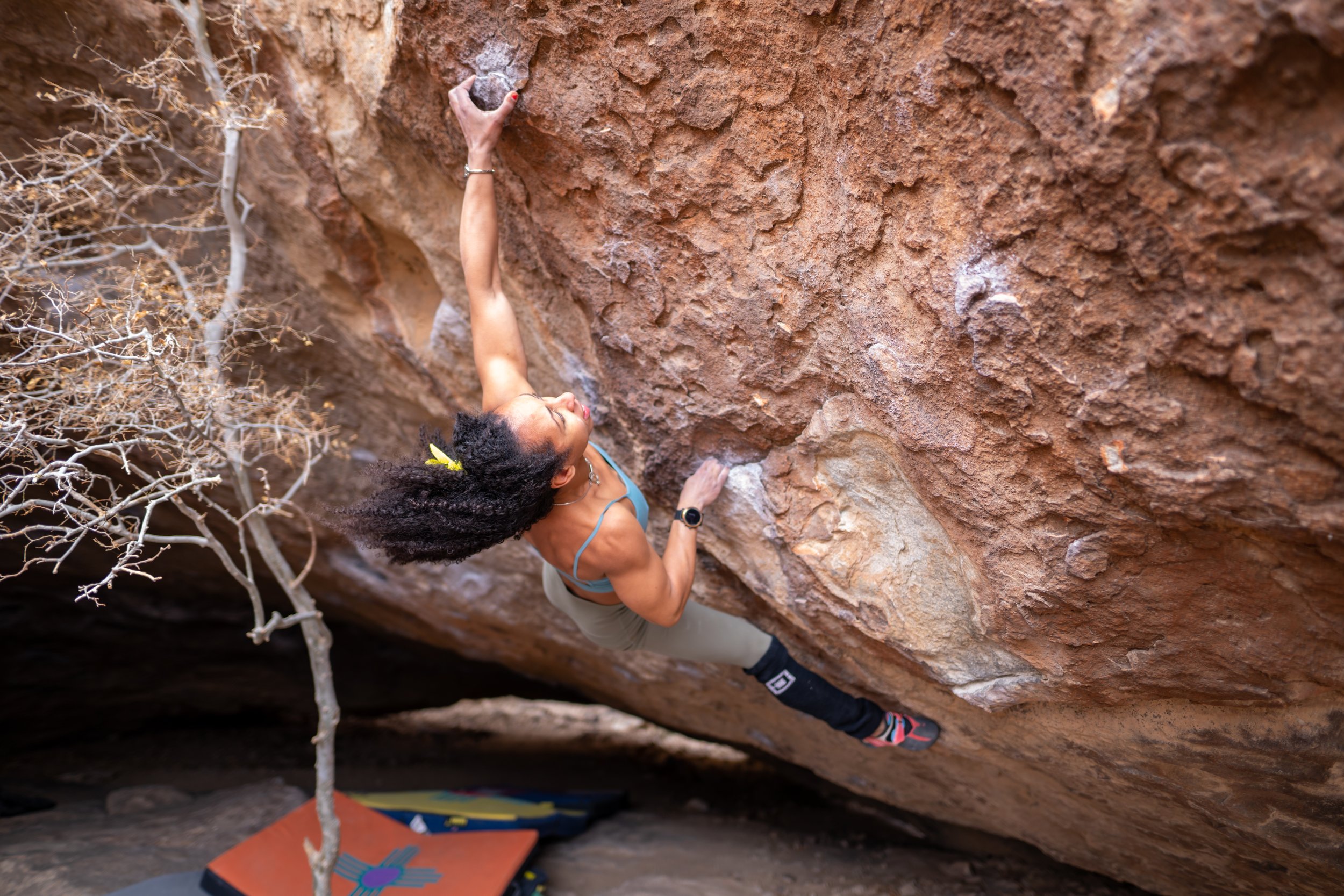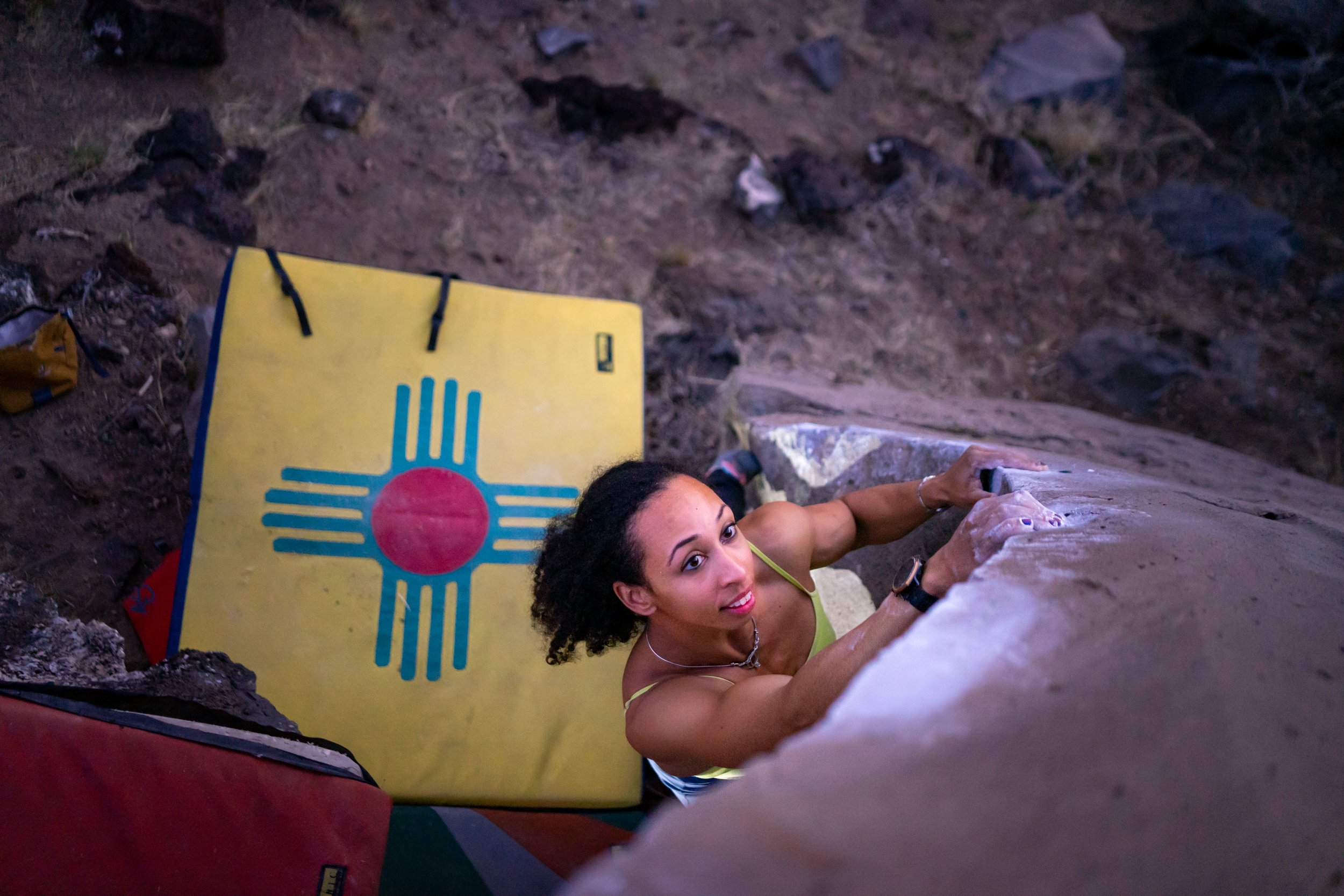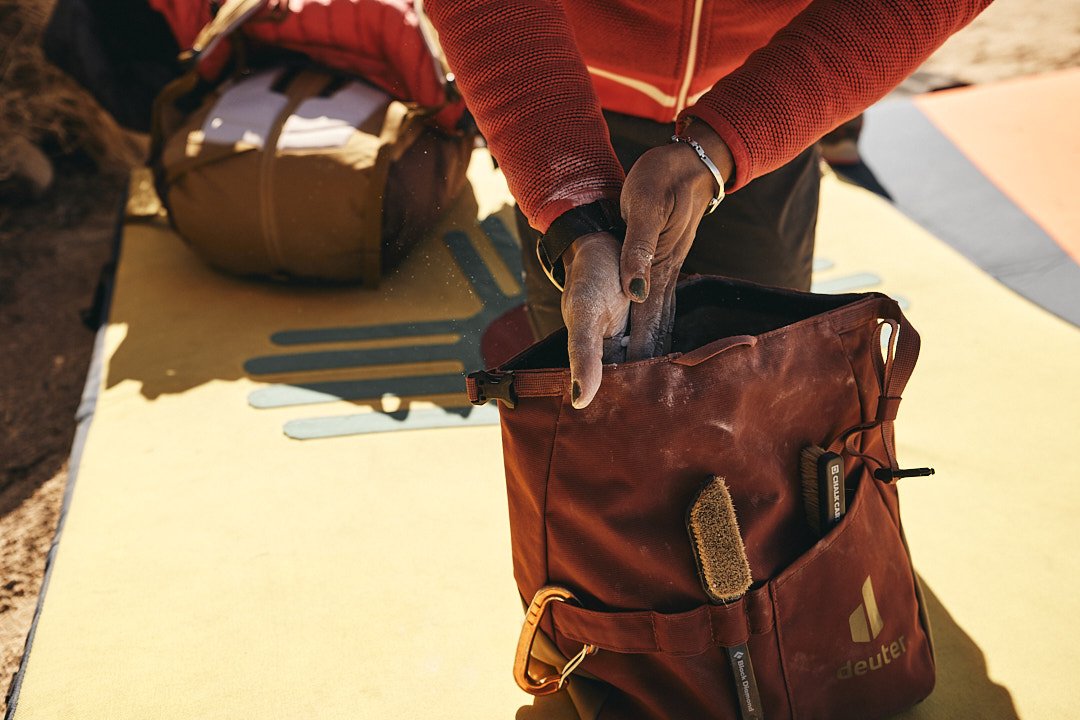Want to Try Outdoor Bouldering? 8 Tips for a Safe Adventure!
The transition from indoor bouldering to outdoor bouldering can be daunting. What do I wear? What gear do I bring? How will I find the boulders? Most climber’s first outdoor climbing experiences usually make funny stories down the road. However, some stories end with a trip to the hospital or a call to mountain rescue. I’ve listed 8 essentials to make your first climbing trip a safe and happy one!
Essentials:
1) Crash Pads
These are basically small mattresses that climbers carry on the back to create a safe landing zone outside. When climbing outside, you need to preview your route and take educated guesses on where you could possibly fall. If you’re lucky, you will have enough pads to cover the entire landing area. However most of the time, your spotters may have to move the pads as you climb.
2) Approach Shoes
These are nearly as important as your climbing shoes. Often the approach to the crag requires scrambling, steep hiking, or easy climbing. Approach shoes are specifically made to help climbers safely get to the climbs! They have sticky rubber on the bottom and some even have some rubber on the top. When I first started climbing, I used running shoes made for the track and slipped all over the rock! Switching to the approach shoes made my appraoches way more enjoyable and safer!
3) Climbing Shoes
Photo by Ziyad Soobhan
Sure, you can technically climb in any shoes….I have climbed in stilletos (I definitely do not recommend this.) However, to get best movement on the rock, climbing shoes are the way to go. Companies make beginner, intermediate and advanced shoes, and they make shoes based on the type of climbing you plan to do!
4)BackPack Made for the outdoors
Photo by Dag Larson
When I went on my first climbing trips, I brought a leather backpack that I normally took to medical school. It offered no support and wasn’t made to withstand scraping against rocks or falling in the mud. Invest in a backpack that has loops for carabiners, space for a water bladder, and can endure Mother Nature!
If you are carrying one crashpad, you can place the backpack inside of it and carry it all on your back. If you are carrying multiple crashpads, then you can wear your backpack on your chest and the crashpad on your back.
5) HeadLamp
I always leave a headlamp in my bag, even if I don’t plan to be out at night. However, I can’t tell you the number of times I’ve been unexpectantly caught in the dark! Headlamps don’t add much weight to your bag, so it’s easy to just keep one with you at all times!
6) Chalk BUCKET And Chalk
Photo by Dag Larson
If you’re going bouldering, you’ll likely want a chalk bucket. It’s a container that does not attach around your waist like a chalk bag and is freestanding. It can hold more chalk than a chalk bag and other useful tools like brushes, snacks, and nail clippers.
7) Snacks and Water
You’re going to be outside likely for several hours—hiking, climbing, and hopefully having a blast. This will consume many calories! So bring easy to carry snacks and water. If it’s cold outside, you can bring a thermos with hot drinks! Just remember a thermos will increase the weight of your pack!
8) Layers of Clothing
Check the weather before you go out, so you can pack your clothes wisely. If you’re going to a crag that has ticks, I’d wear long pants, at least for the approach. If you are going to be climbing slab or off-width, I’d cover as much skin as possible. I once slipped on a slab top out wearing just a sport bra and lost a ton of skin on my belly! If you’re climbing a roof and its hot, shorts can be a great option!
9) Guidebook
Guidebooks are books written by fellow climbings that describe the climbs in an area. They usually contain pictures of the boulders and a list of problems on each boulder. They also include maps and directions including GPS coordinates in some newer books to help you find each boulder. If there is no physical book, often websites such as 27crags and mountainproject have online guidebooks that can help you find fun problems to climb!
LESS ESSENTIAL ITEMS:
I highly recommend having the items listed above to have a great climbing adventure. Here are some other items you may want to bring along too : Athletic Tape, Nail Clippers, Fan, Chalk Brush, Hand Warmer/Heater, and a Satellite communicator that has a SOS feature.
If you have any questions about picking out the right gear for you, ask it in the comments! Enjoy your climbing trips!










